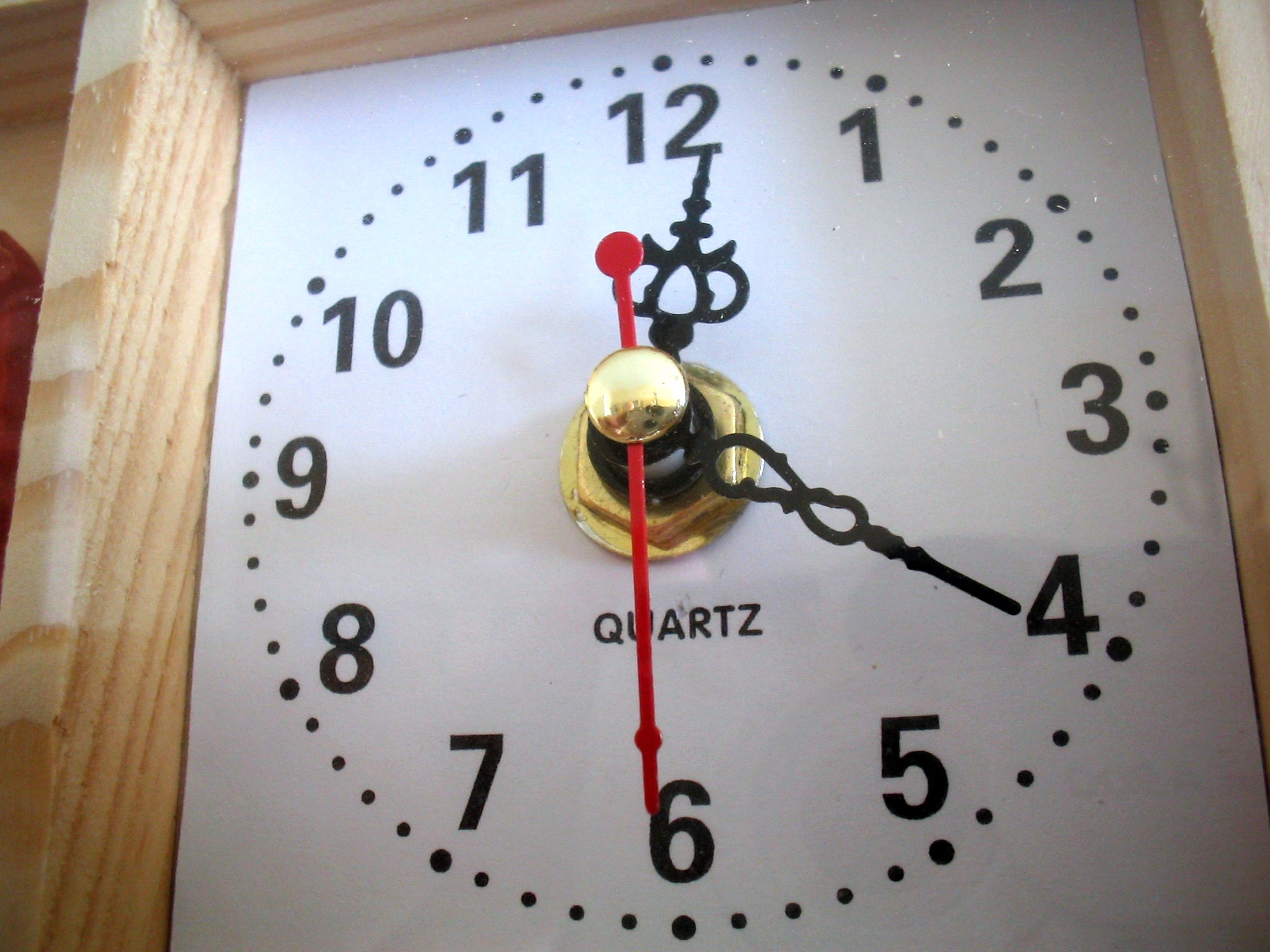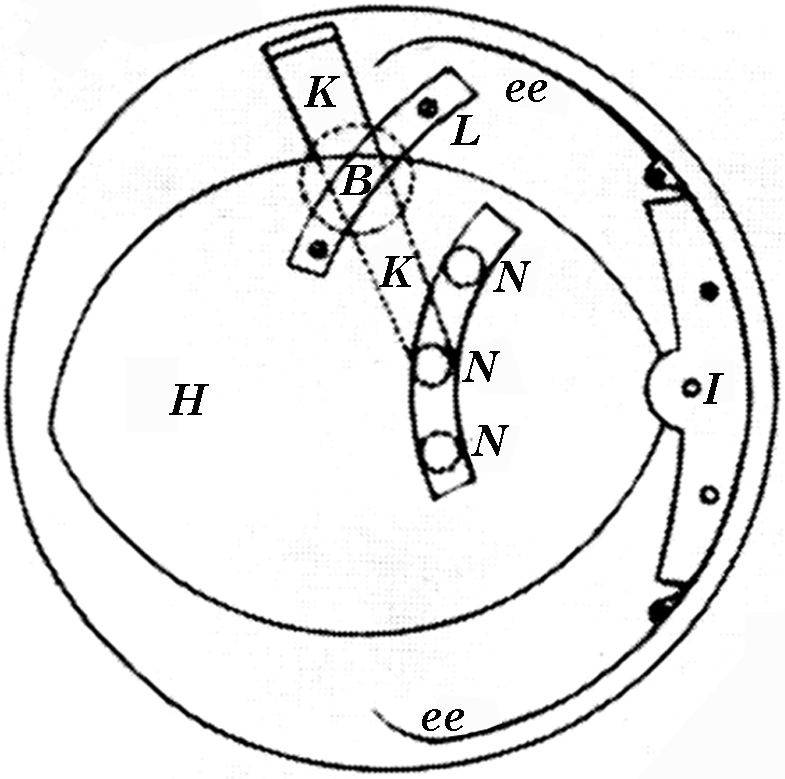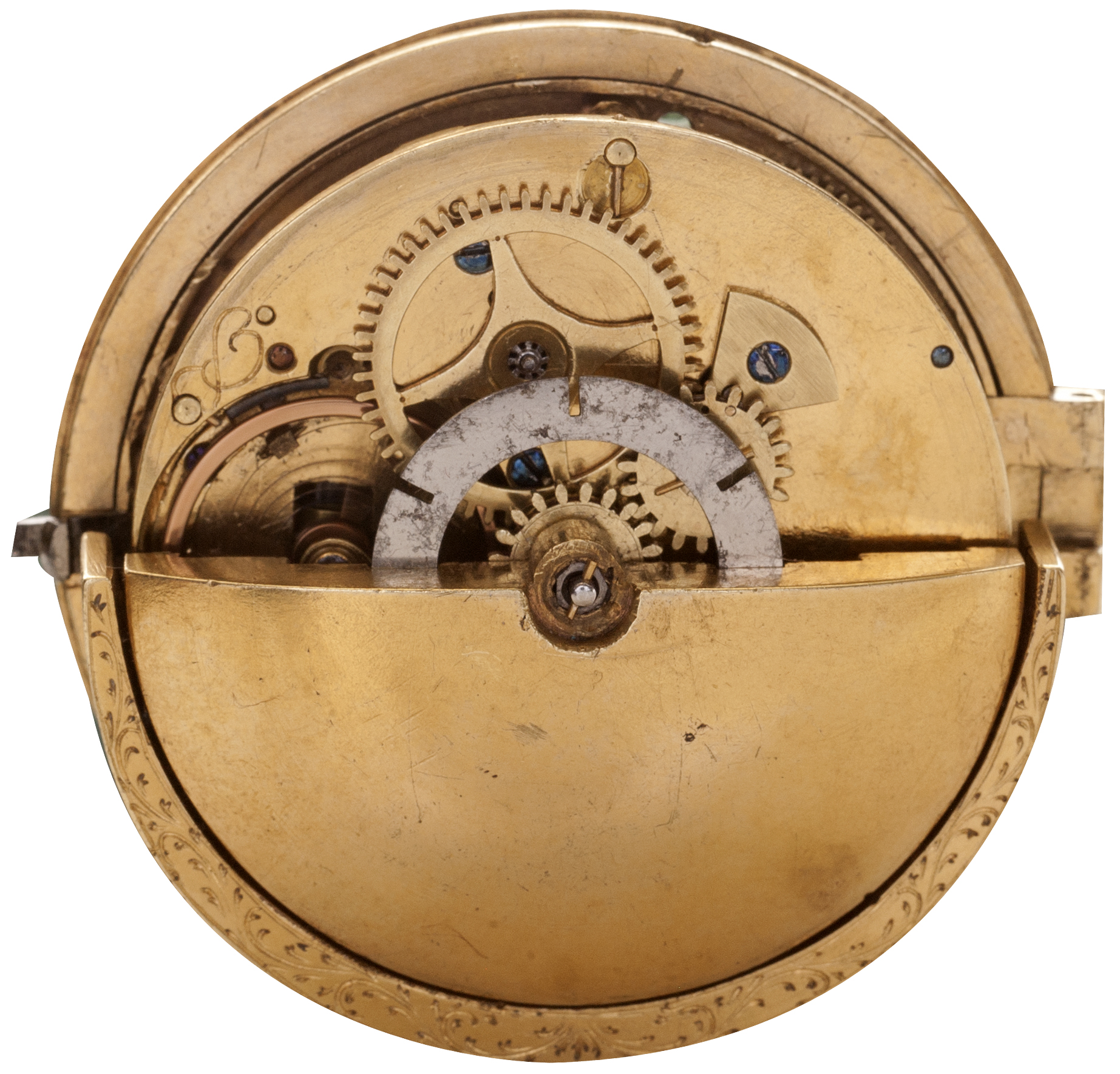|
Miyota (watch Movement Manufacturer)
''Miyota'' is a Japanese manufacturer of quartz and mechanical watch movements. As such Miyota is part of the Citizen group of companies. In this group Miyota is a part of the Citizen Watch Co., Ltd. Movement Division. In 1959 Citizen Watch established a movement-making factory in the town of Miyota, Japan. In 2016 a large movement assembly factory in Saku city, Nagano prefecture was opened. Most watch brands do not make their own movements in house, but rather use standard watch movements manufactured by specialized companies like Miyota. Products Mechanical movements Miyota produces various 'standard' and 'premium' grade mechanical movements for automatic wristwatches. The ''Miyota 8215'' is an entry level non-hacking twenty-one jewel three-hand with date automatic wristwatch movement with a uni-directional winding system (left rotation) with an accuracy of -20 to +40 seconds per day, and a power reserve of over 40 hours. It allows hand winding. The date window may be pla ... [...More Info...] [...Related Items...] OR: [Wikipedia] [Google] [Baidu] |
Quartz Clock
Quartz clocks and quartz watches are timepieces that use an electronic oscillator regulated by a quartz crystal to keep time. This crystal oscillator creates a signal with very precise frequency, so that quartz clocks and watches are at least an order of magnitude more accurate than mechanical clocks. Generally, some form of digital logic counts the cycles of this signal and provides a numerical time display, usually in units of hours, minutes, and seconds. Since the 1980s, when the advent of solid-state digital electronics allowed them to be made compact and inexpensive, quartz timekeepers have become the world's most widely used timekeeping technology, used in most clocks and watches as well as computers and other appliances that keep time. Explanation Chemically, quartz is a specific form of a compound called silicon dioxide. Many materials can be formed into plates that will resonate. However, quartz is also a piezoelectric material: that is, when a quartz crystal is su ... [...More Info...] [...Related Items...] OR: [Wikipedia] [Google] [Baidu] |
Mechanical Watch
A mechanical watch is a watch that uses a clockwork mechanism to measure the passage of time, as opposed to quartz watches which function using the vibration modes of a piezoelectric quartz tuning fork, or radio watches, which are quartz watches synchronized to an atomic clock via radio waves. A mechanical watch is driven by a mainspring which must be wound either periodically by hand or via a self-winding mechanism. Its force is transmitted through a series of gears to power the balance wheel, a weighted wheel which oscillates back and forth at a constant rate. A device called an escapement releases the watch's wheels to move forward a small amount with each swing of the balance wheel, moving the watch's hands forward at a constant rate. The escapement is what makes the 'ticking' sound which is heard in an operating mechanical watch. Mechanical watches evolved in Europe in the 17th century from spring powered clocks, which appeared in the 15th century. Mechanical watches ar ... [...More Info...] [...Related Items...] OR: [Wikipedia] [Google] [Baidu] |
Movement (clockwork)
In horology, a movement, also known as a caliber or calibre (British English), is the mechanism of a watch or Clock, timepiece, as opposed to the ''case'', which encloses and protects the movement, and the ''clock face, face'', which displays the time. The term originated with mechanical timepieces, whose clockwork movements are made of many moving parts. The movement of a digital watch is more commonly known as a module. In modern mass-produced clocks and watches, the same movement is often inserted into many different styles of case. When buying a quality pocketwatch from the mid-19th to the mid-20th century, for example, the customer would select a movement and case individually. Mechanical movements get dirty and the lubricants dry up, so they must periodically be disassembled, cleaned, and lubricated. One source recommends servicing intervals of: 3–5 years for watches, 15–20 years for grandfather clocks, 10–15 years for wall or mantel clocks, 15–20 years for anniv ... [...More Info...] [...Related Items...] OR: [Wikipedia] [Google] [Baidu] |
Citizen Watch
is an electronics company primarily known for its watches and is the core company of a Japanese global corporate group based in Nishitokyo, Tokyo, Japan. In addition to Citizen brand watches, it is the parent of American watch company Bulova, and is also known for manufacturing small electronics such as calculators. History The company was founded in 1930 by Japanese and Swiss investors. It took over Shokosha Watch Research Institute (founded in 1918) and some facilities of the assembly plant opened in Yokohama in 1912 by the Swiss watchmaker Rodolphe Schmid. The brand Citizen was first registered in Switzerland by Schmid in 1918 for watches he sold in Japan. The development of this brand was supported in the 1920s by Count Gotō Shinpei with his hope that watches could become affordable to the general public. The growth of Citizen until World War II relied on technology transfer from Switzerland. Products Atomic timekeeping Citizen launched the world's first multi-band atom ... [...More Info...] [...Related Items...] OR: [Wikipedia] [Google] [Baidu] |
Miyota
is a town located in Nagano Prefecture, Japan. , the town had an estimated population of 15,562 in 6897 households, and a population density of 260 persons per km². The total area of the town is . Geography Miyota is located on the eastern border of Nagano Prefecture with Gumma Prefecture. Mount Asama (2568 meters) is within the town's northern borders. The Citizen Watch group has other engineering facilities in the adjacent town of Saku, Nagano. Surrounding municipalities *Nagano Prefecture ** Komoro ** Karuizawa **Saku *Gumma Prefecture ** Tsumagoi Climate The town has a humid continental climate characterized by warm and humid summers, and cold winters with heavy snowfall (Köppen climate classification ''Dfb''). The average annual temperature in Miyota is 8.2 °C. The average annual rainfall is 1291 mm with September as the wettest month. The temperatures are highest on average in August, at around 21.1 °C, and lowest in January, at around -4.0 ... [...More Info...] [...Related Items...] OR: [Wikipedia] [Google] [Baidu] |
Saku, Nagano
is a city located in Nagano Prefecture, Japan. , the city had an estimated population of 99,131 in 41,522 households, and a population density of 230 persons per km². The total area of the city is . Geography Saku is located in east-central Nagano Prefecture in the Saku Basin of the upper reaches of the Shinano River. The city claims the distinction of containing the point furthest from the sea within Honshu island (actually this point lies within the former town of Usuda). Since the opening of Sakudaira Station on the Nagano Shinkansen, many people commute to Tokyo, which is one hour away. Surrounding municipalities *Nagano Prefecture ** Komoro, Chino, Tōmi ** Minamisaku District: Sakuho **Kitasaku District: Karuizawa, Miyota, Tateshina *Gunma Prefecture ** Kanra District: Shimonita, Nanmoku Climate The city has a climate characterized by characterized by hot and humid summers, and relatively mild winters (Köppen climate classification ''Dwa''). The average annu ... [...More Info...] [...Related Items...] OR: [Wikipedia] [Google] [Baidu] |
Automatic Watch
An automatic watch, also known as a self-winding watch or simply an automatic, is a mechanical watch where the natural motion of the wearer provides energy to wind the mainspring, making manual winding unnecessary if worn enough. It is distinguished from a ''manual watch'' in that a manual watch must have its mainspring wound by hand at regular intervals. Operation In a mechanical watch the watch's gears are turned by a spiral spring called a mainspring. In a ''manual watch'' energy is stored in the mainspring by turning a knob, the ''crown'' on the side of the watch. Then the energy from the mainspring powers the watch movement until it runs down, requiring the spring to be wound again. A self-winding watch movement has a mechanism which winds the mainspring using the natural motions of the wearer's body. The watch contains an oscillating weight that turns on a pivot. The normal movements of the watch in the user's pocket (for a pocketwatch) or on the user's arm (for a wristwat ... [...More Info...] [...Related Items...] OR: [Wikipedia] [Google] [Baidu] |
Hack Watch
A hack watch is a mechanical watch whose movement offers a mechanism for stopping and setting the seconds hand of the watch, then restarting the watch the instant the time setting matches the time displayed by a reference timepiece. Hack watches are used on ships for astronomical sights for navigation and to synchronize the actions of personnel who may not be in direct communication (for example, personnel engaged in a military mission). For navigational purposes, the hack watch is synchronized with the ship's marine chronometer. The use of a hack watch makes it easier to take sights, as the chronometer is normally in a fixed position in a ship – below decks and suspended in gimbals A gimbal is a pivoted support that permits rotation of an object about an axis. A set of three gimbals, one mounted on the other with orthogonal pivot axes, may be used to allow an object mounted on the innermost gimbal to remain independent of ... to keep it level and protect it from the elem ... [...More Info...] [...Related Items...] OR: [Wikipedia] [Google] [Baidu] |
Jewel Bearing
A jewel bearing is a plain bearing in which a metal spindle turns in a jewel-lined pivot hole. The hole is typically shaped like a torus and is slightly larger than the shaft diameter. The jewels are typically made from the mineral corundum, usually either synthetic sapphire or synthetic ruby. Jewel bearings are used in precision instruments where low friction, long life, and dimensional accuracy are important. Their largest use is in mechanical watches. History Jewel bearings were invented in 1704 for use in watches by Nicolas Fatio de Duillier, Peter Debaufre, and Jacob Debaufre, who received an English patent for the idea. Originally natural jewels were used, such as diamond, sapphire, ruby, and garnet. In 1902, Verneuil process, a process to make synthetic sapphire and ruby (crystalline aluminium oxide, also known as corundum) was invented by Auguste Verneuil, making jewelled bearings much cheaper. Today most jewelled bearings are synthetic ruby or sapphire. Historica ... [...More Info...] [...Related Items...] OR: [Wikipedia] [Google] [Baidu] |
Automatic Watch
An automatic watch, also known as a self-winding watch or simply an automatic, is a mechanical watch where the natural motion of the wearer provides energy to wind the mainspring, making manual winding unnecessary if worn enough. It is distinguished from a ''manual watch'' in that a manual watch must have its mainspring wound by hand at regular intervals. Operation In a mechanical watch the watch's gears are turned by a spiral spring called a mainspring. In a ''manual watch'' energy is stored in the mainspring by turning a knob, the ''crown'' on the side of the watch. Then the energy from the mainspring powers the watch movement until it runs down, requiring the spring to be wound again. A self-winding watch movement has a mechanism which winds the mainspring using the natural motions of the wearer's body. The watch contains an oscillating weight that turns on a pivot. The normal movements of the watch in the user's pocket (for a pocketwatch) or on the user's arm (for a wristwat ... [...More Info...] [...Related Items...] OR: [Wikipedia] [Google] [Baidu] |
Movement (clockwork)
In horology, a movement, also known as a caliber or calibre (British English), is the mechanism of a watch or Clock, timepiece, as opposed to the ''case'', which encloses and protects the movement, and the ''clock face, face'', which displays the time. The term originated with mechanical timepieces, whose clockwork movements are made of many moving parts. The movement of a digital watch is more commonly known as a module. In modern mass-produced clocks and watches, the same movement is often inserted into many different styles of case. When buying a quality pocketwatch from the mid-19th to the mid-20th century, for example, the customer would select a movement and case individually. Mechanical movements get dirty and the lubricants dry up, so they must periodically be disassembled, cleaned, and lubricated. One source recommends servicing intervals of: 3–5 years for watches, 15–20 years for grandfather clocks, 10–15 years for wall or mantel clocks, 15–20 years for anniv ... [...More Info...] [...Related Items...] OR: [Wikipedia] [Google] [Baidu] |
Quartz Watch
Quartz is a hard, crystalline mineral composed of silica (silicon dioxide). The atoms are linked in a continuous framework of SiO4 silicon-oxygen Tetrahedral molecular geometry, tetrahedra, with each oxygen being shared between two tetrahedra, giving an overall chemical formula of Silicon dioxide, SiO2. Quartz is the second most abundant mineral in Earth's continental crust, behind feldspar. Quartz exists in two forms, the normal α-quartz and the high-temperature β-quartz, both of which are chiral. The transformation from α-quartz to β-quartz takes place abruptly at . Since the transformation is accompanied by a significant change in volume, it can easily induce microfracturing of ceramics or rocks passing through this temperature threshold. There are many different varieties of quartz, several of which are classified as gemstones. Since antiquity, varieties of quartz have been the most commonly used minerals in the making of Jewellery, jewelry and hardstone carvings, espe ... [...More Info...] [...Related Items...] OR: [Wikipedia] [Google] [Baidu] |






